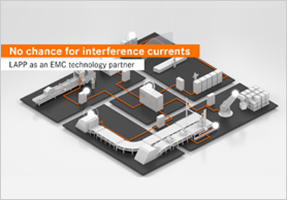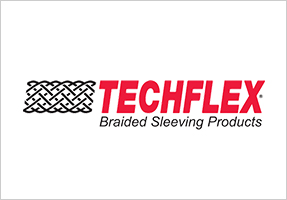
A Comprehensive Guide to Tray Cable
Written By: LAPP Tannehill
What is tray cable? See how tray cable can be versatile in many applications with tray cable types: WTTC/Direct Burial (ITC), PLTC, VNTC, and XHHW. Find out what's right for your use case.
What is tray cable?
Tray cable is a widely used type of multiconductor or multipair cable approved for installation in cable raceways and cable trays.
According to the NEC (National Electric Code), tray cable is defined as “a factory assembly of two or more insulated conductors, with or without associated bare or covered grounding conductors under a nonmetallic sheath, for installation in cable trays, in raceways, or where supported by a messenger wire.”
Since cable trays do not fully enclose cables, which would be the case with cable raceway or ducts, tray cable must conform to strict requirements to reduce the risk of mechanical damage and the resultant fire hazard that could exist. As a result, tray cable can be very durable and versatile in many environments.
Some general characteristics of tray cable include:
- Can be used indoors or outdoors
- Is sunlight, heat, and moisture resistant and adheres to UL specifications.
- Available in 300V and 600V variations that are tested to flammability standards.
- Can be used in direct sunlight or buried/underground applications (with the correct ratings)
- Will work even if exposed from conduit to equipment
- Must be supported every six feet
- Must meet applicable exposed-run requirements
What makes a tray-rated cable different from a standard multi-conductor?
Tray cables are high-quality cables that have been tested rigorously and can also possess armor over individual conductors for superior insulation and a robust jacket that can withstand heavy abrasion.
Tray cables also pass stringent impact and crush tests per UL 1569 and do not require the use of conduit. This lowers installation and maintenance costs, while also making routing during installation quicker and easier.
When and where should you use a tray-rated cable?
Tray cables are a versatile cable with broad usage wherever installation within cable trays or raceways is required.
Common applications include control, power, signal, instrumentation or lighting and tray cable is found across many industrial situations including industrial plant expansions, food & beverage processing plants including brewery applications, automotive plants, wind energy, machine tool, forestry equipment, oil and petrochemical equipment, cold temperature storage and packaging facilities, processing equipment, and more.
Common Tray Cable Types: Type TC, Type PLTC, Type ITC and Type WTTC
The most common UL cable types for usage in cable trays are as follows:
| Type | UL Standard | Description | Details |
|---|---|---|---|
| Type TC | UL 1277 | Power and Control Tray Cable | 600V tray cable for industrial power & control circuits. |
| Type PLTC | UL 13 | Power Limited Tray Cable | 300V tray cable for power limited circuits including industrial control systems and security, intercom and audio systems. |
| Type ITC |
UL 2250 |
Instrumentation Tray Cable | 300V tray cable for industrial instrumentation signal and control circuits. |
| Type WTTC | UL2277 | Wind Turbine Tray Cable | 1000V tray cable designed for the extreme conditions of wind turbine applications. |
Type TC: UL1277 Power and Control Tray Cable
Type TC Power and Control Tray Cable are commonly used industrial-grade tray cables commonly found in industrial control systems, petrochemical facilities, and other industries such as metals/mining and pulp/paper.
Article 336 of the National Electrical Code (NEC or ANSI/NFPA 70) defines Type TC tray cable which is typically rated to 600V, though 1000V and 2000V are also available.
Type TC tray cable can be utilized in control applications, feeder lines and branch circuits and common use-cases such as control, power, lighting, signal circuitry and Class 1 hazardous circuits.
The two most common types of Type TC Tray Cable are VNTC (Vinyl Nylon Tray Cable) and XHHW (Cross-linked polyethylene High Heat-resistant Water-resistant Tray Cable).
VNTC Tray Cable: Widely used and cost-effective Type TC Tray Cable.
VNTC, or Vinyl Nylon Tray Cable is the most frequently used traditional type of Type TC tray cable. VNTC is typically constructed of a PVC outer jacket (hence the “V” in VNTC) for protection against oil, flames and sunlight, with inner conductors insulated with nylon-coated PVC (THHN, TFFN or THWN wires).
Due to its construction method VNTC is also referred to by a wide variety of names including: VNTC/THHN cable, VNTC/TFFN cable, VNTC/THWN cable, THHN/PVC, TFFN/PVC, THWN/PVC, THHN tray cable, TFFN tray cable and PVC-Nylon/PVC tray cable
Regardless, VNTC a good choice for general use manufacturing and industrial tray cable installations due to its cost effectiveness and good general characteristics.
VNTC is very cost-effective than the more expensive XHHW tray cable, but it also has a lower resistance to heat and moisture due to its thermoplastic PVC jacketing. Thermoplastics tend to melt under high heat conditions.
XHHW Tray Cable: The robust, high performance Type TC Tray Cable.
XHHW, or Cross-linked polyethylene (hence the “X”), High Heat-resistant, Water-resistant tray cable feature a cross-linked polyethylene (XLPE) insulation which provides better high heat and high current performance resulting than VNTC tray cable with their PVC insulation. This in turn results in a higher protection level against short circuits and fire hazards for the application.
The “cross-linking” process changes the polyethylene from a thermoplastic into a thermoset material, with much stronger polymer structural bonds at the molecular level, resulting in much improved high-temperature performance.
XHHW tray cable can also be referred to as XPTC tray cable, XLP tray cable or XLPE tray cable. The outer jacket for XHHW tray cable can be a variety of materials depending on application including PVC, TPE (Thermoplastic Polymer) and others.
Type PLTC: UL13 Power Limited Tray Cable
Type PLTC or Power Limited Tray Cable, are tray cables intended for low-energy, power-limited circuits including industrial control systems, instrument & control Wiring, sensor/transducers, intercom systems and alarm systems. These tray cables are commonly used by OEM’s and in non-plenum and non-riser applications.
Power limited tray cables can be routed in the same tray as 600V power and control tray cables when separated by a divider. There are many sub-ratings within the category of PLTC cables, so many of these tray-rated cables are tested for multiple ratings.
Type ITC: UL 2250 Instrumentation Tray Cable
Type ITC or Instrumentation Tray Cable is the most common type of PLTC that UL2250 specifies for use in industrial settings in accordance with Article 727 of NFPA 70 (NEC: National Electrical Code).
UL2250 defines these cables as consisting of “two or more insulated copper or thermocouple alloy conductors enclosed within a nonmetallic jacket”, though the cable may have a metal sheath or armor over the nonmetallic jacket and may contain grounding conductors and/or optical fiber members.
These cables are also rated to 300V and are common in instrumentation and control circuits, as signal cables but not power cables. Today most ITC cable and PLTC cable are interchangeable in most applications with dual-ratings, as they are identical in construction method and materials.
Type WTTC: UL 2277 Wind Turbine Tray Cable
Type WTTC or Wind Turbine Tray Cable is designed to withstand the extreme conditions encountered in wind turbine applications including temperature extremes, water resistance flexibility, oil resistance, abrasion resistance and other harsh conditions.
WTTC cable is designed utilizing a variety of high-performance insulation & jacket material that combine exceptional oil & sunlight resistance and are rated to 1000V.
Optional Tray Cable Ratings: -ER (Exposed Run), Direct Burial, Sunlight Resistance and Oil Resistance
In addition to the main UL tray cable types of -TC, -PLTC, -ITC and -WTTC there are several additional optional ratings that may be application to one or more of the main designators.
Tray Cable Exposed Run -ER Rating
In general tray cable must be placed within cable trays. If more than 6 feet (1.8 meters) of the cable is outside of the tray for connection to an electrical device the cable must either be armored (Type MC), must be installed in conduit or some other type of raceway or very frequently must have an “-ER” or Exposed Run rating.
This -ER rating can be applied to Type TC, Type PLTC and Type ITC tray cables and requires additional stringent requirements related to the effects of crushing and impact forces to provide an unarmored but physically robust enough solution to permit use in “exposed runs” or “extended runs” (formerly called “open wiring”).
Tray cable with the -ER rating can be installed outside of the cable tray for six feet at a time for up to 50 feet with proper support, like with struts.
In many applications this eliminates the cost of conduit and installation, additional armor, and a hefty NEC violation fee. Cable manufacturers will add an “-ER” suffix to the listing printed on the cable such as “TC-ER”, “PLTC-ER” or “ITC-ER”.
Tray Cable Direct Burial Rating
Tray cables marked with “DIRECT BURIAL” or “DIR BUR” are suitable for applications requiring direct burial in the earth. These cable constructions are designed to withstand the moisture, heat and other effects common with direct exposure to soil when buried in trenches without the need for additional protection in the form of sheathing or piping.
Tray Cable Sunlight Resistance Rating
Tray cables marked with “SUNLIGHT RESISTANCE” or “SUN RES” are suitable for applications where they will be subjected to the direct rays of the sun. The materials of construction for cable jacketing and insulation are selected and tested to withstand UV and other effects.
Tray Cable Oil Resistance Rating
Tray cables marked with “OIL RES I” have been constructed and tested as suitable for exposure to oil at 60°C while the “OIL RES II” rating is for oil exposure at 75°C.
Tray Cable Manufacturers and Applications
Tray cable is widely used across a broad spectrum of industrial applications and is designed and manufactured by most of the leading global cable manufacturers including Alpha Wire, General Cable / Prysmian, LAPP and Southwire amongst many others.
For further information the various types of high performance, flexible, oil-resistant industrial tray cables for power, control and signaling applications please reference our Industrial Tray Cable Solutions reference for additional selection guidance.
Tray Cable Pricing
LAPP Tannehill continues to nurture healthy relationships with our manufacturers and suppliers to provide you with a range of tray cable pricing that fits within your budget.
Brian Arickx, Director of Supply Chain at LAPP Tannehill, says, “As always, the purchasing team at LAPP Tannehill is doing everything in their power to buy all products at the best possible cost for our customers. One luxury of distribution is we have the oversight of 250 manufacturing partners, allowing us to see trends and easily compare cost options across the industry.”
If you’re not sure where to start on your buying journey when it comes to finding the perfect tray cable manufacturer to meet your specific project requirements, then fill out our contact us form or talk with us via our chatbot.












